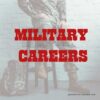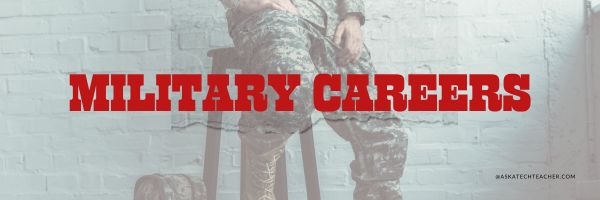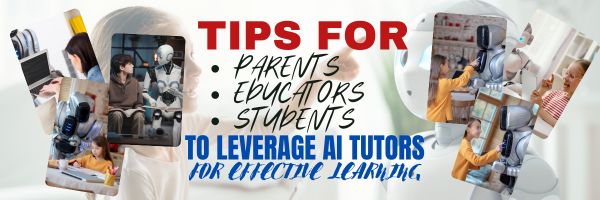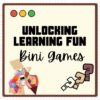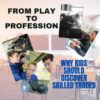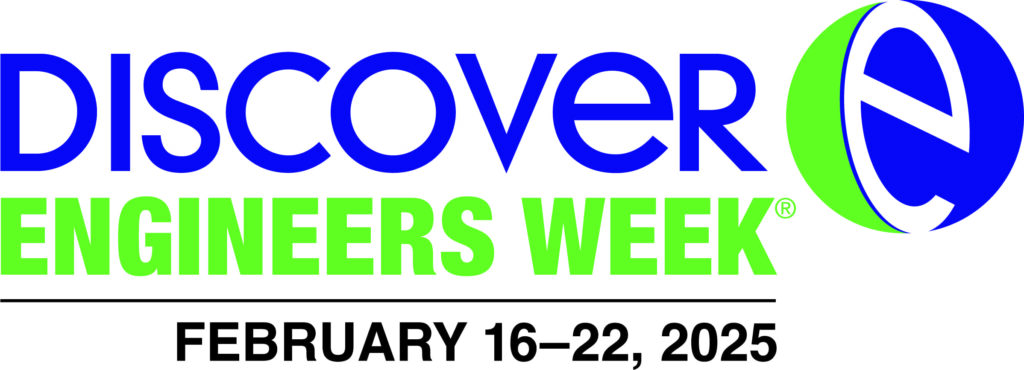Author: Jacqui
Tech Tip #144: 11 Ways X/Twitter Improves Education
In these 169 tech-centric situations, you get an overview of pedagogy—the tech topics most important to your teaching—as well as practical strategies to address most classroom tech situations, how to scaffold these to learning, and where they provide the subtext to daily tech-infused education.
Today’s tip: How Twitter improves learning
Here are 11 ways X/Twitter improves education:
- Students learn to be focused.
- Students learn to share.
- Writing short messages perfects “headlining”.
- Tweets are written knowing tweeple @reply.
- #Hashtags develop community.
- Students learn tolerance for all opinions.
- It breaks down barriers to talking to other people.
- Students are engaged.
- Twitter acts as the class notepad.
- Twitter is always open.
- Twitter isn’t intimidating.
A note: Before using X, get the buy-in of involved parties such as administration and parents. You don’t want them surprised by what they might think of as a tool for socializing rather than teaching.
Sign up for a new tip each week or buy the entire 169 Real-world Ways to Put Tech into Your Classroom.
What’s your favorite tech tip in your classroom? Share it in the comments below.
Share this:
- Click to share on Facebook (Opens in new window) Facebook
- Click to share on X (Opens in new window) X
- Click to share on LinkedIn (Opens in new window) LinkedIn
- Click to share on Pinterest (Opens in new window) Pinterest
- Click to share on Telegram (Opens in new window) Telegram
- Click to email a link to a friend (Opens in new window) Email
- More
Didn’t Get in College? Interested in the Military? Try NAPS
The Naval Academy Preparatory School (NAPS) is located on Naval Station Newport in historic Newport, Rhode Island. The Naval Academy Preparatory School is the Navy’s fourth oldest school; only the Naval Academy, Naval War College, and Naval Post Graduate School are older.
The mission of the Naval Academy Preparatory School is to enhance midshipman candidates’ moral, mental, and physical foundations to prepare them for success at the U.S. Naval Academy. The ten-month course of instruction at NAPS, lasting from August through May, emphasizes preparation in English Composition, Mathematics, Chemistry, Physics, and Information Technology.
Demanding military, physical and character development programs complement the academic preparation to fully prepare students for the challenges of life at a service academy. As part of the physical development program, NAPS offers a varsity athletic program that competes against other preparatory schools, junior colleges and college junior varsity teams.
Curriculum
-
Academics: Core courses like mathematics (typically pre-calculus or calculus), English, chemistry, and physics. These mirror the foundational subjects at USNA, giving students a head start.
-
Physical Training: Intense physical conditioning to meet the fitness standards of the Naval Academy, including swimming, running, and strength exercises.
-
Military Training: Leadership development, naval customs, and discipline to instill the ethos of a future naval officer.
Admissions
Life at NAPS
Outcomes
Share this:
- Click to share on Facebook (Opens in new window) Facebook
- Click to share on X (Opens in new window) X
- Click to share on LinkedIn (Opens in new window) LinkedIn
- Click to share on Pinterest (Opens in new window) Pinterest
- Click to share on Telegram (Opens in new window) Telegram
- Click to email a link to a friend (Opens in new window) Email
- More
Subscriber Special: 50% Off Sidebar Sponsors
Every month, subscribers to our newsletter get a free/discounted resource to help their tech teaching.
March 5-15th
50% discount on sidebar sponsors (instead of $100 per month, you get the same program for $50 a month)
Required: Minimum of 6 months paid in advance, or $300
We place your logo and link in the blog sidebar. Additionally, once a month, I’ll share an optional update on your product with my readers (which you write).
Contact askatechteacher @ gmail . com for more details. (more…)
Share this:
- Click to share on Facebook (Opens in new window) Facebook
- Click to share on X (Opens in new window) X
- Click to share on LinkedIn (Opens in new window) LinkedIn
- Click to share on Pinterest (Opens in new window) Pinterest
- Click to share on Telegram (Opens in new window) Telegram
- Click to email a link to a friend (Opens in new window) Email
- More
How to Leverage AI Tutors for Effective Learning Tips for Parents, Educators, and Students
Generative AI is all anyone in education talks about anymore so the Ask a Tech Teacher team wanted to provide a collection of tips for using AI as a tutor. Rather than us introducing this article, we thought we’d like Grok do it himself:
How to Leverage AI Tutors for Effective Learning: Tips for Parents, Educators, and Students
AI tutors transform learning. They generate instant feedback and personalized lessons. While they are powerful tools, they don’t replace traditional classroom instruction. Instead, they can complement such. Students, parents, and teachers must be proactive in using AI to maximize its benefits.
The key lies in the balance. Use AI to enhance learning, not replace critical thinking or human interaction. Smart learning assistants are powerful allies. The challenge is knowing when to trust the technology and when to step back and think for yourself. (more…)
Share this:
- Click to share on Facebook (Opens in new window) Facebook
- Click to share on X (Opens in new window) X
- Click to share on LinkedIn (Opens in new window) LinkedIn
- Click to share on Pinterest (Opens in new window) Pinterest
- Click to share on Telegram (Opens in new window) Telegram
- Click to email a link to a friend (Opens in new window) Email
- More
25+ Video Collections
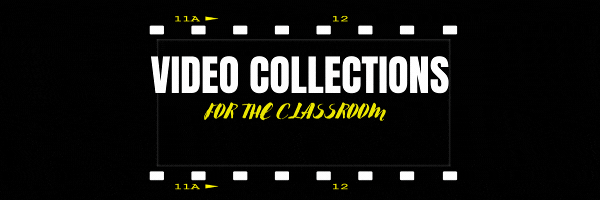 Here are some excellent themed video collections to use in your classroom (click here for updates on the list): (more…)
Here are some excellent themed video collections to use in your classroom (click here for updates on the list): (more…)
Share this:
- Click to share on Facebook (Opens in new window) Facebook
- Click to share on X (Opens in new window) X
- Click to share on LinkedIn (Opens in new window) LinkedIn
- Click to share on Pinterest (Opens in new window) Pinterest
- Click to share on Telegram (Opens in new window) Telegram
- Click to email a link to a friend (Opens in new window) Email
- More
Tech Tip #107: Ways to Avoid Phishing
In these 169 tech-centric situations, you get an overview of pedagogy—the tech topics most important to your teaching—as well as practical strategies to address most classroom tech situations, how to scaffold these to learning, and where they provide the subtext to daily tech-infused education.
Today’s tip: Email Phishing
Category: Parents
 Q: I got an email that looks legitimate, but I’m not sure. How do I check?
Q: I got an email that looks legitimate, but I’m not sure. How do I check?
A: You’re right to take a step back. Email has become the most popular method of hacking individual computers—because most people use email and usually aren’t as vigilant as they need to be.
‘Phishing’ is an attempt to steal your personal information by posing as a trusted source (a friend, your bank–like that). Why is it so popular with crooks? Because it works.
As an educator, you want to teach students how to protect themselves as soon as they start using open email networks. Here are six suggestions:
- Don’t open attachments.
- Don’t click links in emails.
- Check the email address of the sender. Does it match the name? Does it fit the sender?
- Check for misspellings and mis-phrasings.
- If you know the sender, does the email sound like their communication style?
- Hover over the link to see the address. If it doesn’t match the text or look legitimate, don’t click.
- Don’t hesitate to email the sender and ask if they sent you the email.
Got those? Here are a few more:
-
Slow Down: Phishing often pushes you to act fast—“Your account’s locked, fix it now!” Take a second to think. If it’s urgent, contact the company directly using a number or site you already know.
-
Don’t Share Sensitive Info: No legit company will ask for your password or full credit card number over email or text. If they do, it’s a scam.
-
Use Two-Factor Authentication (2FA): Add an extra step (like a code sent to your phone) to logins. Even if they get your password, they can’t get in without the second piece.
-
Keep Software Updated: Hackers exploit old systems. Update your phone, apps, and computer regularly to stay protected.
Sign up for a new tip each week or buy the entire 169 Real-world Ways to Put Tech into Your Classroom.
What’s your favorite tech tip in your classroom? Share it in the comments below.
Share this:
- Click to share on Facebook (Opens in new window) Facebook
- Click to share on X (Opens in new window) X
- Click to share on LinkedIn (Opens in new window) LinkedIn
- Click to share on Pinterest (Opens in new window) Pinterest
- Click to share on Telegram (Opens in new window) Telegram
- Click to email a link to a friend (Opens in new window) Email
- More
Unlocking Learning Fun: How Educational Bini Games Foster Child Development
If you haven’t heard of Bini Games, you’re not alone. When they contacted me about sharing their website with my readers, I checked it out and agreed it was a great idea. Their offerings are designed to support multiple facets of child development through engaging, interactive, and fun gameplay. Here’s a more detailed peek into how they assist cognitive growth, critical thinking, and creativity:
Unlocking Learning Fun: How Educational Bini Games Foster Child Development
Parents and caregivers help children learn and grow by actively engaging and promoting their growth. In this regard, a similar kids learning game is an excellent choice because they provide a fun-focused opportunity to observe a child’s development.
While games may appear easy on the surface, they provide a variety of educational benefits that can help a child develop cognitive flexibility, reactivity, coordination, and numeracy. As a result, in this blog, we will look at the intrinsic values of learning games and how they might help with cognitive growth.
Engaging Young Minds: The Power of Educational Bini Games for Cognitive Growth
Cognitive development develops at a surprising rate during a child’s early years. Now that we’ve covered the basics, let’s look at how these activities affect specific cognitive skills:
Enhancing Memory and Attention
During play, children frequently have to memorize details, sequences, and rules. This improves their memory and attention span, which are both necessary for academic performance and daily life.
Promoting Problem-Solving and Critical Thinking
Play inherently includes challenges and impediments, which allow youngsters to solve problems and think critically. Whether they’re figuring out how to build a stable tower of blocks or how to outwit an opponent in a game, youngsters learn critical problem-solving abilities that will serve them well throughout their lives.
Supporting Language Development
Whether they are discussing their thoughts, describing their acts, or conversing with their playmates, children frequently use language to communicate during play. They get better grammar, increase their vocabulary, and strengthen their ability to express themselves clearly as a result.
Fostering Creativity and Imagination
Play is a creative expression that comes naturally. Children are encouraged to think creatively and experiment with new concepts via activities like role-playing, painting, and building buildings. Children can experiment with many roles and situations through imaginative play in particular, which fosters the development of a flexible thinking and a rich inner world.
Conclusion: How to Pick the Game That Enhances Creativity, Problem-Solving, and More!
Play is essential to children’s learning and development; it is not only a respite from education. Since each child is unique, what interests one may not interest another. Because of this, it’s fantastic to have a wide variety of educational Bini Games to pick from, allowing you to find the ideal one for your child’s particular interests. Children who participate in various forms of play acquire cognitive abilities that are critical to their success in the future. We have the ability to encourage and support these activities as adults, giving kids a strong basis for learning and growth.
Here’s the sign-up link if the image above doesn’t work:
https://forms.aweber.com/form/07/1910174607.htm
“The content presented in this blog are the result of creative imagination and not intended for use, reproduction, or incorporation into any artificial intelligence training or machine learning systems without prior written consent from the author.”
Jacqui Murray has been teaching K-18 technology for 30 years. She is the editor/author of over a hundred tech ed resources including a K-12 technology curriculum, K-8 keyboard curriculum, K-8 Digital Citizenship curriculum. She is an adjunct professor in tech ed, Master Teacher, freelance journalist on tech ed topics, and author of the tech thrillers, To Hunt a Sub and Twenty-four Days. You can find her resources at Structured Learning.
Share this:
- Click to share on Facebook (Opens in new window) Facebook
- Click to share on X (Opens in new window) X
- Click to share on LinkedIn (Opens in new window) LinkedIn
- Click to share on Pinterest (Opens in new window) Pinterest
- Click to share on Telegram (Opens in new window) Telegram
- Click to email a link to a friend (Opens in new window) Email
- More
From Play to Profession: Why Kids Should Discover Skilled Trades
This is a topic dear to my heart–non-college options for high school grads. The Ask a Tech Teacher team has a good summary of why students should consider journeyman trades and vocational schools over college:
From Play to Profession: Why Kids Should Discover Skilled Trades
For years, the dominant message to young people has been that college is the only pathway to success. However, a growing number of educators, industry leaders, and parents are recognizing the immense value of skilled trades. Not everyone needs to attend a four-year university to build a successful and fulfilling career. By introducing kids to trades early, we open up opportunities for them to explore careers that match their skills, interests, and personalities while also addressing critical workforce shortages. (more…)
Share this:
- Click to share on Facebook (Opens in new window) Facebook
- Click to share on X (Opens in new window) X
- Click to share on LinkedIn (Opens in new window) LinkedIn
- Click to share on Pinterest (Opens in new window) Pinterest
- Click to share on Telegram (Opens in new window) Telegram
- Click to email a link to a friend (Opens in new window) Email
- More
I’m traveling Feb. 16-22
I’m off to visit my two military children and then help my son move before deploying overseas. As a result, I won’t be around much–a bit, but forgive me if I seem to be ignoring everyone!
See you-all in a few weeks!
–Comments are closed because I will be completely unreliable!
Share this:
- Click to share on Facebook (Opens in new window) Facebook
- Click to share on X (Opens in new window) X
- Click to share on LinkedIn (Opens in new window) LinkedIn
- Click to share on Pinterest (Opens in new window) Pinterest
- Click to share on Telegram (Opens in new window) Telegram
- Click to email a link to a friend (Opens in new window) Email
- More
Engineers Week Feb. 16-22 2025
This week, February 16-22, 2025 is DiscoverE’s Engineers Week. Their tagline:
“A week-long event, a year-long commitment”
Do you wonder why anyone would be passionate about engineering? Overall, engineering offers a combination of intellectual challenge, real-world impact, and opportunities for personal and professional growth. By pursuing a career in engineering, students can contribute to meaningful projects, solve complex problems, and make a positive difference in the world.
What is Engineers Week?
Engineers Week, also known as EWeek, is an annual event celebrated in the United States typically during the third or fourth week of February, this week: February 18-24, 2024 dedicated to promoting awareness and appreciation of engineering.
During Engineers Week, engineering societies, universities, companies, and other organizations organize workshops, competitions, seminars, outreach programs to schools, career fairs, and networking events. The goal is to inspire the next generation of engineers, showcase the importance of engineering in solving global challenges, and recognize the achievements of engineers and encourage young people to pursue careers in STEM (science, technology, engineering, and mathematics).
Share this:
- Click to share on Facebook (Opens in new window) Facebook
- Click to share on X (Opens in new window) X
- Click to share on LinkedIn (Opens in new window) LinkedIn
- Click to share on Pinterest (Opens in new window) Pinterest
- Click to share on Telegram (Opens in new window) Telegram
- Click to email a link to a friend (Opens in new window) Email
- More



